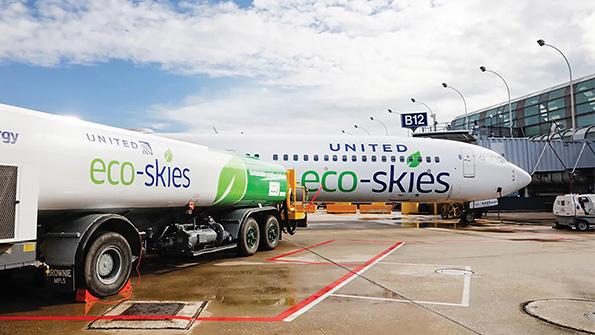
Ask the Editors: The Aviation Week Network invites our readers to submit questions to our editors and analysts. We’ll answer them, and if we can’t we’ll reach out to our wide network of experts for advice.
What is the maximum quantity of sustainable aviation fuel, as a percentage of pre-COVID-19 worldwide fleet consumption, that could be created per year without adversely affecting food production or causing a negative environmental impact such as deforestation?
Aviation Week France Bureau Chief Thierry Dubois responds:
How much sustainable fuel will aviation need? The International Civil Aviation Organization estimates that about 600 million metric tons of jet fuel will be necessary to cover all aviation needs in 2050. This could require up to 45 exa-joules (EJ, a unit of energy) of biomass input to biofuel production, given the relatively low efficiency of the transformation process.
A sustainable biomass supply of 70 EJ could be produced each year, “possibly going up to 100 EJ, thanks to tightly regulated reforestation efforts,” the Energy Transitions Commission (ETC) suggested in a November 2018 report. So all aviation demand in 2050 could be met by sustainable biofuel production, according to the ETC, which is a lobbying group representing energy producers (such as Shell), energy users (such as materials manufacturer Saint-Gobain) and economists (such as Nicholas Stern).
But what about demand from other sectors? Aviation should take priority, according to the ETC. As a matter of fact, fossil liquid fuels—and their biofuel equivalents—are particularly well-suited to aviation because of their energy density. “Aviation is almost the only sector of the economy where . . . there appears to be no feasible alternative to a bio-based route to achieve net-zero carbon emissions,” the ETC report says. Batteries and hydrogen are ill-suited because of their low energy density.
The group sees a strong case for treating aviation as the priority sector for the predictably limited supply of sustainable biofuel. However, the industry cannot rely on developments in the road transport sector to drive biofuel development and production volume—the onus is on aviation to create and foster a viable industry. A key factor to sustainability is keeping the use of purpose-grown plants to a minimum, as they would compete with food production. Fuel should be created primarily from waste streams, says the ETC. A challenge then is to collect municipal, agricultural or forestry waste.
“There are exciting long-term opportunities with synthetic fuels such as ‘power to liquid,’” adds a spokesman for the Air Transport Action Group (ATAG), a lobbying group in commercial aviation. The process uses sunlight as the power source to convert CO2 from the air and water into jet fuel. Challenges are the low power density of sunlight and the stability—as opposed to reactivity—of water and CO2.
ATAG sees sustainable aviation fuel as part of the solution, along with aircraft technology and operational improvements, for the industry to meet its goal of halving CO2 emissions by 2050 from 2005 levels. But a tight definition of what constitutes a “sustainable biofuel” will have to be embedded in any policy aiming at increasing biofuel adoption in aviation. The nongovernmental environmental organization Greenpeace insists no crop-based biofuel can be considered sustainable. “Advanced biofuels without a negative impact on the environment or the right to food do not exist on a large scale,” says a Greenpeace spokesperson. “Clean fuels are an argument the industry has been increasingly using, but they are a pipe dream.”
